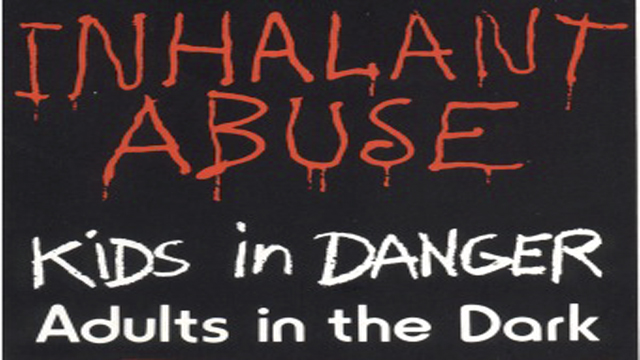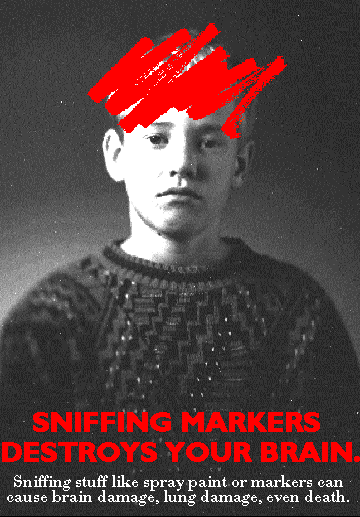Straight, No Chaser previously reviewed various forms of inhalants used to get intoxicated. Many kids think inhalants are a harmless, cheap, and quick way to “get high.” Because many inhalants can be found around the house, you and your family may not even think they are harmful. But the chemicals in the inhalant vapors can change the way the brain works and cause additional bodily harm. In some cases, the harmful effects of inhalants can be irreversible. This post discusses the various effects these entities have on the human body.
Initial Effects
The initial effects of inhalants mainly involve the brain, and that’s a big part of why they’re used. Inhalants rapidly pass from the lungs into the bloodstream, and effects on the brain are produced within minutes. It’s easy to consider inhalant use in someone who appears to be intoxicated with alcohol but doesn’t have the smell or any evidence of alcohol around. Clinical effects include slurred speech, euphoria, dizziness and lack of coordination.
As promptly as the effects occur, they dissipate. The intoxication typically only lasts a few minutes. This explains the habit of intoxicant users to take several back-to-back doses. This action produces a loss of both inhibition and control. Long term use can cause muscle spasms and tremors or even permanent difficulty with basic actions like walking, bending, and talking, due to damage by these chemicals on structures that promote communication to and from the brain. The net effect is a syndrome with an appearance similar to that caused by multiple sclerosis.
An additional effect of intoxicants is a diminished flow of oxygen to the brain. The symptoms produced by this are dependent on the area of the brain affected and can range from memory loss to reduced problem-solving skills to disruptions of movement.
Effects of Long-Term Use
You should also know that continual abuse of inhalants can cause serious damage to the heart and liver, and it can produce muscle weakness and nerve malfunction. Certain inhalants can also render the bone marrow unable to produce blood cells, which can appear your immune system and having sufficient blood to carry oxygen and nutrients around the body. Frequent long-term use of certain inhalants can cause a permanent change or malfunction of peripheral nerves, called polyneuropathy.
Addictive Tendencies
Some people, particularly those who abuse inhalants a lot and for a long time, report a strong need to continue using inhalants. Compulsive use and a mild withdrawal syndrome can occur.
How Can I Tell if Someone Is Abusing Inhalants?
Sometimes you can’t tell. Other times you might see small signs that tell you a person is abusing inhalants, including the following:
- chemical odors on their breath or clothing
- paint or other stains on their face, hands, or clothing
- nausea or loss of appetite
- weight loss
- muscle weakness
- disorientation
- inattentiveness, uncoordinated movement, irritability, and depression
What Should I Do if I Know Someone Is Abusing Inhalants?
- You first step is to secure your home. Given that so many items can be used to produce inhalant intoxication, you should revisit the household items you leave easily accessible. Review this Straight, No Chaser post for a list of commonly used inhalants.
- In the midst of an acute intoxication, seek medical attention immediately. Intoxicants have multiple chemicals in them, and although symptoms may not be predictable, intoxications are predictably dangerous under certain conditions. In real-time, there’s not much to be gain by your intervening at home. Get help.
- When someone has a drug problem, it’s not always easy to know what to do. If someone you know is abusing inhalants, encourage him or her to talk to a parent, school guidance counselor, or other trusted adult. There are also anonymous resources, such as the National Suicide Prevention Lifeline (1-800-273-TALK) and the Treatment Referral Helpline (1-800-662-HELP). These resources offer a wide range of relevant services beyond what is implied in the name.
Feel free to ask any questions you may have on this topic.
Order your copy of Dr. Sterling’s new book Behind The Curtain: A Peek at Life from within the ER at jeffreysterlingbooks.com, iTunes, Amazon, Barnes and Nobles and wherever books are sold.
Thanks for liking and following Straight, No Chaser! This public service provides a sample of what http://www.SterlingMedicalAdvice.com (SMA) and 844-SMA-TALK offers. Please share our page with your friends on WordPress, like us on Facebook @ SterlingMedicalAdvice.com and follow us on Twitter at @asksterlingmd.
Copyright © 2016 · Sterling Initiatives, LLC · Powered by WordPress





